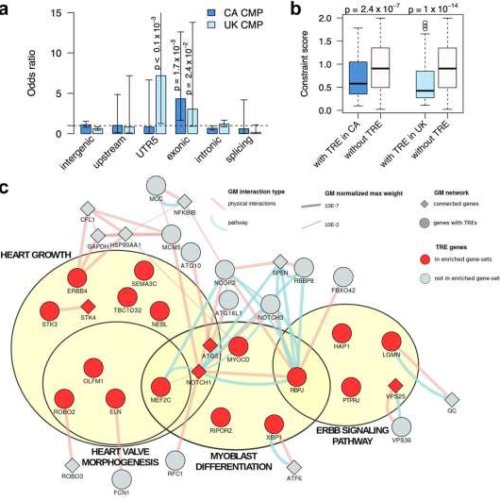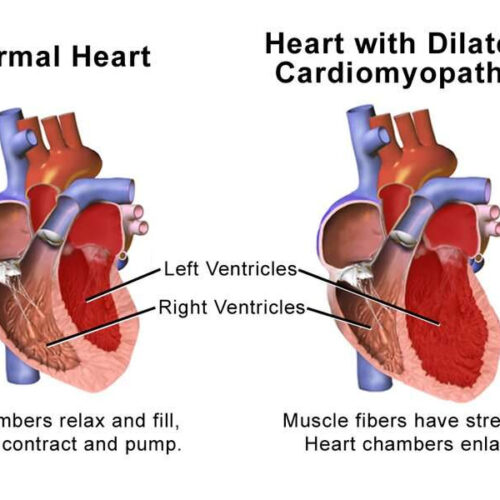by The Hospital for Sick Children Functional characteristics of rare tandem repeat expansions. a Burden of rare tandem repeat expansions in different genomic features in individuals with CMP compared to controls. Credit: eBioMedicine (2024). DOI: 10.1016/j.ebiom.2024.105027In the first study to use whole genome sequencing to examine tandem repeat expansions in heart conditions, scientists at The Hospital...
Tag: <span>cardiomyopathy</span>
Drug may improve cardiac function in hypertrophic cardiomyopathy
by Melissa Rohman, Northwestern University Dilated Cardiomyopathy. Credit: Blausen.com staff (2014). “Medical gallery of Blausen Medical 2014”. WikiJournal of Medicine 1 (2). DOI:10.15347/wjm/2014.010. ISSN 2002-4436. CC BY 3.0 Valsartan, an angiotensin II receptor blocker drug, delayed disease progression and improved cardiac structure and function in patients with early-stage hypertrophic cardiomyopathy, according to results from a recent clinical trial published in Nature...
Machine-learning model can detect rare cardiomyopathy
by Will Doss, Northwestern University Machine-learning model can detect rare cardiomyopathy Time course of non-cardiac and cardiac phenotypes associated with wild-type ATTR cardiomyopathy vs. non-amyloid heart failure prior to the diagnosis of heart failure. The proportion of patients at each time point (years before heart failure diagnosis) with a first diagnosis of an associated feature...
Genomic autopsy identifies cardiomyopathy variants
by Will Doss, Northwestern University Elizabeth McNally, MD, PhD, the Elizabeth J. Ward Professor of Genetic Medicine, was senior author of the study published in JAMA Cardiology. Credit: Northwestern University Postmortem genetic testing, or genomic autopsy, of young individuals who experienced sudden death revealed many had known genetic variants that are associated with cardiomyopathy, according to a...
Should nursing home residents nearing the end of life continue taking statins?
Journal of the American Geriatrics Society Research Summary AMERICAN GERIATRICS SOCIETY Cardiovascular disease (also called heart disease) is one of the most common medical conditions older adults face. In nursing homes, almost half of all older adult residents have been diagnosed with problems affecting the heart and/or blood vessels. In spite of this, we know...
Surplus antioxidants are pathogenic for hearts and skeletal muscle
by Jeff Hansen, University of Alabama at Birmingham Many heart diseases are linked to oxidative stress, an overabundance of reactive oxygen species. The body reacts to reduce oxidative stress—where the redox teeter-totter has gone too far up—through production of endogenous antioxidants that reduce the reactive oxygen species. This balancing act is called redox homeostasis. But...
Atrial flutter: What to know
Atrial flutter is a type of abnormal heart rhythm that causes a rapid but regular heartbeat. It can lead to severe complications without treatment from a doctor. Atrial flutter occurs when the upper chambers of the heart, or atria, beat much faster than the ventricles, which are the lower chambers. According to one support group,...
Diseased heart muscle cells have abnormally shortened telomeres, researchers find
People with a form of heart disease called cardiomyopathy have abnormally short telomeres in heart muscle cells responsible for contraction, according to a new study by researchers at the Stanford University School of Medicine. Human chromosomes (grey) capped by telomeres (white). Credit: PD-NASA; PD-USGOV-NASA A telomere is a DNA sequence that serves as a protective cap on the ends...





